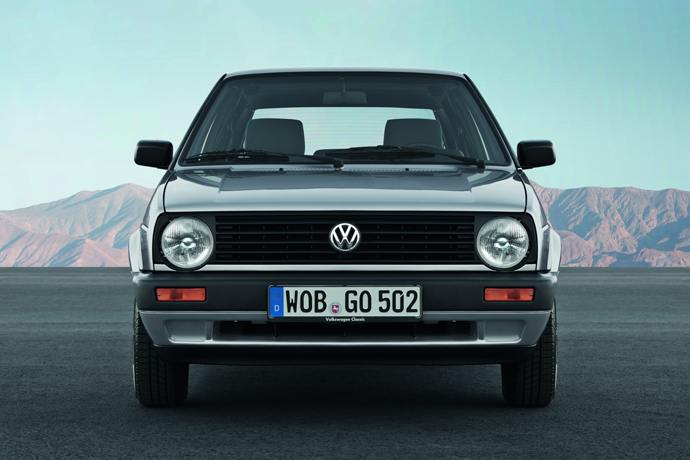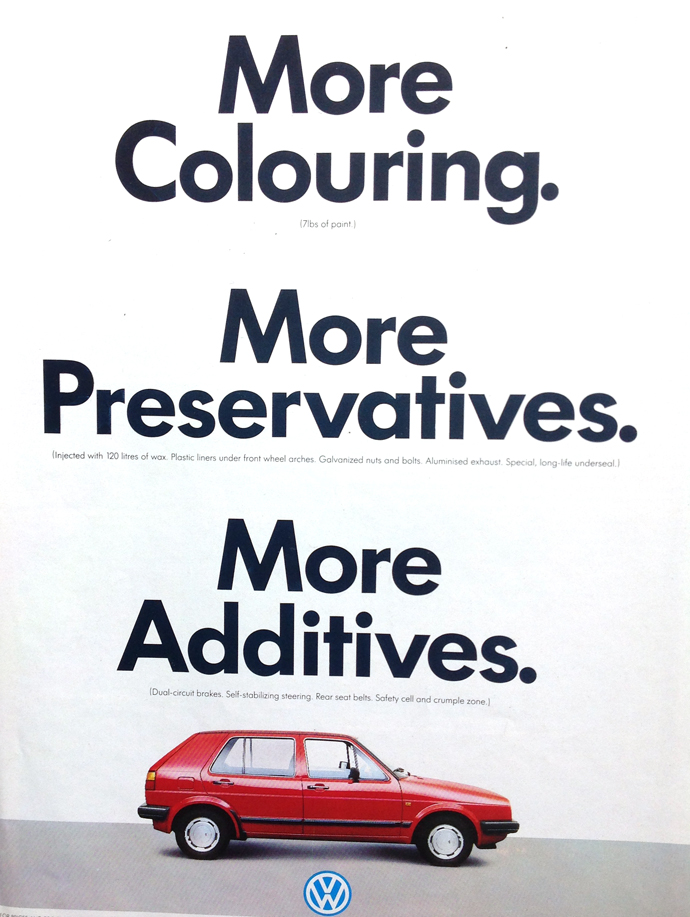With the Golf celebrating its 40th this year there’s been lots of attention on the Mk1. And rightly so. However, as values of the original Golf continue to soar more people are turning to the still affordable Mk2. Recognising its potential as a handy and cheap to run classic that can be used every day, its relevance as an ultra cool retro icon has become even more important. So how did it come into being, and how was it different from the Mk1? We had a delve through the archives to find out…
Just like when the first Golf succeeded the Beetle, product planners in charge of developing the Mk2 had a pretty tough task on their hands; they had to retain all the key attributes of the Mk1 – and thus not disappoint existing Golf owners – yet at the same time offer a measurable improvement in terms of packaging and performance.
Just as well the decision to go ahead with the new Golf was taken as early as 1979, two of the intervening four years being taken up with design and development and the remaining time used for tooling up. Interestingly, a total of ten designs were considered – including a submission from Giugiaro himself – before VW’s own in-house creation was chosen.

Crucially, the new car had to be instantly recognisable as a ‘Golf’ – and in this respect, the designers had a useful trick up their sleeve. What they would do was to incorporate the single most distinctive aspect of Giugiaro’s original design – its broad C-panel between the rear doors and tailgate – on the more curvy Mk2, albeit at the expense of repeating the biggest niggle on the original Golf, it’s rear three-quarter blindspot!

With changing global human dimensions (basically everyone getting fatter) the new Golf also had to be made more accommodating. Thus the wheelbase was stretched by 7.5cm and the track was made 2.3cm wider at the front and 5cm wider at the rear. Inevitably this made it heavier; the three-door Mk2 GTi, for example, topped the scales at 920kg against the Mk1’s 840kg, but as a consequence of its more rounded shape and narrower nose its drag coefficient improved by 19 per cent from 0.42 to 0.34, which helped it to a slightly higher top speed with the same engine.
Jump from a Mk1 to a Mk2 and you instantly appreciate its bigger internals, albeit mostly benefiting rear seat passengers, and certainly as a long distance cruiser it made a lot more sense with its 55-litre plastic fuel tank giving it an improved range over the Mk1 Golf’s 40-litre receptacle – the turbodiesel by as much as 600 miles, while the GTi would be able to go a further 450 miles on a tankful of juice. The boot was 30 per cent bigger than the Mk1’s too with the space-saver fitted.
There were other subtle improvements in overall refinement, too, like reduced wind noise courtesy of the rain gutters being incorporated into the roof, the window glass being brought closer to the smooth outer skin of the bodyshell and the front quarter-windows now being made flush.
VW claim to have ‘re-assessed’ no fewer than 5200 individual components from the Mk1, making improvements where necessary – including refining the 1.8-litre GTi engine so that peak torque came in lower (3100rpm instead of 3500rpm) to make it more driveable. What’s for sure, in line with its aim to make the Mk2 more cosseting, the suspension got a thorough re-working to improve the car’s ride quality. The front struts got 2.5cm more travel, while at the rear travel was increased by 1.2cm to soften things up a bit.
The Mk1 Golf had already forged a strong reputation for build and reliability, and VW were keen on building on this with the Mk2 using extensive use of robots during production to ensure a high standard of fit and finish. Key to longevity, and where we’ve discovered a bit of a glitch with the Mk1 today, concerned rustproofing. As part of the Mk2’s production process pre-heated complete bodyshells were dipped in liquid wax for cavity protection, while additional underseal was a further measure to prevent the onset of corrosion.

And that was about it. Prototypes appeared in 1981 and an exhaustive four million test miles were completed before the Mk2 was finally passed for production in 1983. Much of this was completed on VW’s Ehra-Lessien test track, while artic and tropical locations were chosen to subject the car to extremes in temperature, the former proving useful in order to improve the car’s heating system in particular. As an interesting aside, total Mk2 development costs were in the region of £250m, which might sound like a fair bit of wedge seeing as though VW based much of it on what had gone before. But in context, £230m was spent on the Austin Maestro. Given the success of one over the other, we’d say it was money well spent…

And needless to say, it was instantly well received by the UK motoring press with What Car? describing it as follows: “It’s a splendid hatchback – it’s spacious, comfortable, and handles well, and suffers no serious flaws. Functional in every way, the Golf has real lasting appeal. And for once, the Volkswagen isn’t painfully overpriced.”
The ‘lasting appeal’ bit you’d have to admit was particularly prophetic.
Indeed, we don’t need to tell you that over 30 years on the Mk2 has become a firm favourite among retro car fans, tuners and cool people around the globe generally. There’s virtually nowt you can’t do to a Mk2 and with prices kicking off at around a grand for a project, getting one in the first place is unlikely to stretch the finances. Best of all, as we can vouch, because parts are so cheap and freely available, it won’t cost much to keep either.
So let’s raise a glass then to the Mk2 – the thirty something that still got an awful lot of life left in it!
Ian
The opinions expressed here are the personal opinions of the author and do not necessarily represent the views and opinions of VW Heritage

